Warm greetings!
The last few months have been busy for me, but it has been a good kind of busy (except for the tax returns, of course). I was invited to speak about my book at various venues and gladly accepted all those invitations, thus spending a lot of time on the road rather than at the computer. My meager speaking skills notwithstanding, I have always enjoyed interacting with a live audience, no matter what the platform—Rotary and Lions clubs, travel groups, book clubs, writers groups, libraries, museum, veterans and retired military officers groups, and even a local chapter of the MIT Alumni Club. Because, as a kindred spirit once noted, “Marketing is hard. Selling is scary. But talking to people about what we love to do is something we do every chance we get.”
And so last month I had the pleasure of giving a talk about Once upon a Mulberry Field at the La Jolla Chapter of the Circumnavigators Club. This is an international organization devoted to bringing together those men and women who have gone around the world, which is why I was also asked to present a short slideshow of some scenery of Vietnam. Scrounging around, I was able to pull together a few pictures of my ancestral homeland, and I’m very happy to share those sweet images with you now, in geographical order starting from the north of the country and heading south.
The picture at the beginning of the post is of Halong (Descending Dragon) Bay, a group of beautiful limestone islands in the Gulf of Tonkin, northeast of Hanoi, and a UNESCO World Heritage Site.
Below are two pictures of Van Mieu (Temple of Literature), in the heart of Hanoi. The thousand-year-old temple used to host the Imperial Academy, Vietnam’s first national university.
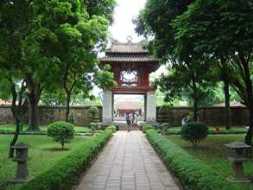
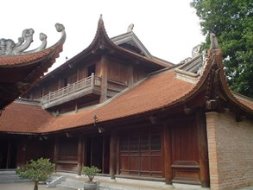
Next are two famous sights of Hanoi: On the left is the Turtle Tower in the middle of Sword Lake, dating back to the 15th Century; on the right is the thousand-year-old iconic One-Pillar Pagoda, rising from a pond like a pristine lotus flower.
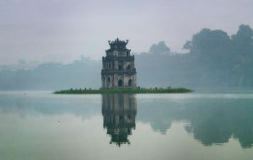
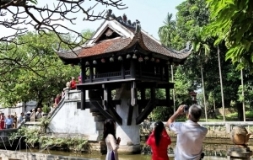
Traveling south, we now arrive at Hue, the last imperial city of Vietnam under the Nguyen dynasty (1802-1945) and the site of a bloody battle during the 1968 Tet Offensive. The pictures below are of the ancient citadel leading into the Forbidden City (left), and an imperial mausoleum on the outskirts of town (right). The Complex of Hue Monuments has been named a UNESCO World Heritage Site.
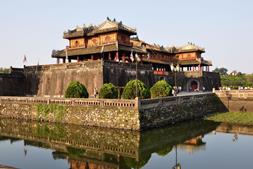
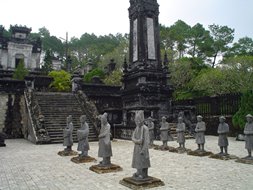
A hundred miles south of Hue is Hoi-An, an exceptionally well-preserved ancient trading post dating from the 15th to the 19th Centuries, also named a UNESCO World Heritage Site. The latest film version of The Quiet American (2002) was shot in part here. The left picture shows a covered bridge and some old houses. The right picture captures a street scene in today’s Hoi-An.
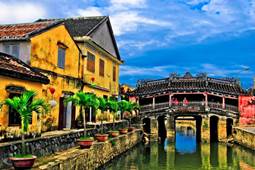
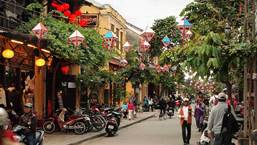
Finally we arrive in Saigon, my former hometown. I will have many opportunities to share more pictures of this capital of the south, so for now I’m just including a couple of postcards: on the left, you can see the City Hall in the French Colonial architecture; and on the right is the view of Saigon skyline by night, with the main Cathedral in the foreground.
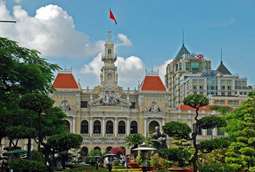
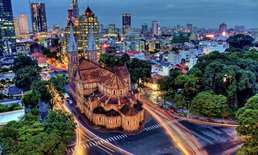
I wish I could share more and bigger pictures, but the blog format makes it impractical to do a whole lot in a single post. But I hope to do more of it in future updates. Lastly, for those of you who missed my recent Facebook post, the 2016 Pulitzer Prize for Fiction was recently awarded to Viet Thanh Nguyen, a Vietnamese refugee-immigrant whose family came to America in 1975. His debut novel about Vietnam titled “The Sympathizer” was a 2015 national bestseller. What an honor and incredible achievement. I am so proud and happy for him.


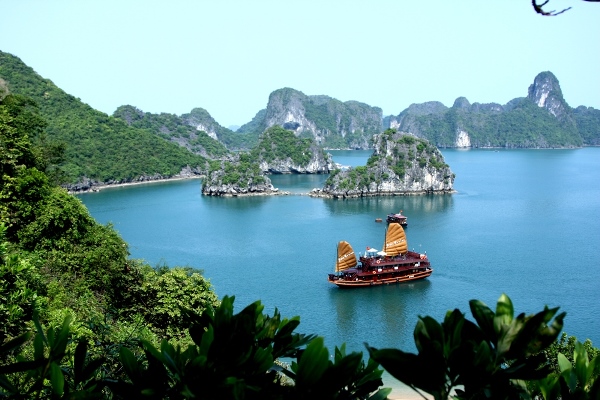
Hi
Congratulations on your speaking invitations. I’m so happy that I know you and that your book is having such profound impact. Wonderful.
Do you know a book called “Catching Shrimp With My Bare Hands”? It is a Vietnamese boy’s memoir but written by his wife who was so touched by her husband’s experiences. I thought of you when I read it.
Mary Harvey
Thank you, Mary! It’s so nice to hear from you. How are you? Yes, I know the book and the author. I bought the book and look forward to reading it.
Hi C.L.
Your pictures seem like stills from a fantasy film: a story set in a magical, mystical land. Captivating.
Hi, Guy. Aren’t they striking photos? I wish I had taken them myself.
Beautiful, beautiful. Thanks so much for sharing. As I noted the extreme age of many of the sites, I felt wonder and gratitude that they have survived. When I hear of heinous destruction of antiquities in the Middle East, I will think of these pictures and be grateful.
My pleasure, Lynne. I’m so glad you enjoyed the pictures. We are very fortunate that some of those beautiful sites survived the element and centuries of warfare.
Je suis toujours aussi ” fan ” des paysages de ce Vietnam que je n’oublierai jamais et que j’aime . Lot of thantks for your postcards of north and south Vietnam .
Merci bien, Marylene. It’s so nice to hear from you. The lovely pictures make me nostalgic and homesick for Vietnam, too.
So happy you are busy with your book. The pictures are beautiful, and rich in tradition and history. Thank you for sharing them.
Hi, Carol. So nice to hear from you. It’s my great pleasure to share about my ancestral homeland, and I’m happy you enjoyed the photos.
Jim- those pics are absolutely magnificent. I’m going to share them with other friends- Unfortunately I will be volunteering for Dezart Performs on Sat. the 7th. I’m so happy for you that you have garnered so many speaking engagements. Well done!!!!!!! Judy Fabris
Thank you kindly, Judy. I wish to some day take a month-long trip to visit in person all those sights from north to south. And then there will be a lot more pictures to share with my friends.